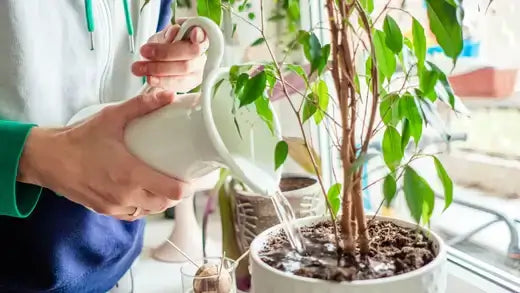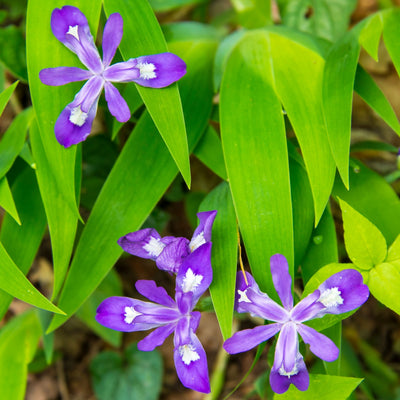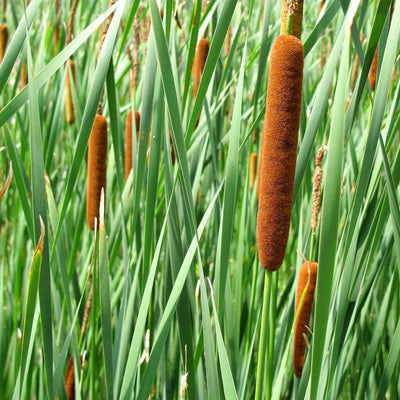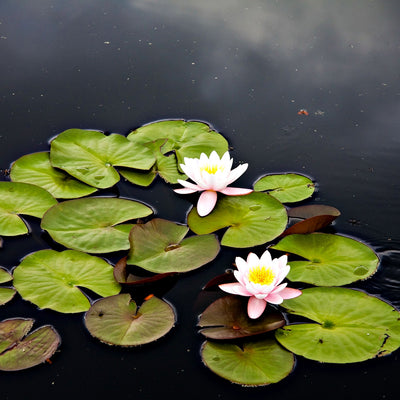10 Best Water Plants to Enhance Your Backyard Oasis
Introduction
Creating a tranquil and lush backyard oasis is a dream for many homeowners, and incorporating indoor water plants into your outdoor space can elevate its aesthetics and ambiance to new heights. Indoor water plants add a touch of serenity to your backyard and promote a harmonious ecosystem by improving air quality and providing shelter for aquatic life. This article explores the ten best indoor water plants perfect for transforming your backyard into a haven of beauty and tranquility.
Water Lily (Nymphaea spp.)Water lilies are the most iconic and picturesque aquatic plants, known for their exquisite floating leaves and vibrant flowers. These plants thrive in still or slow-moving water and are available in various colors, including white, pink, and yellow. Water lilies enhance the visual appeal of your water feature and provide shade and shelter for fish and other aquatic creatures.
Lotus
Lotus plants hold deep cultural significance in various cultures and are revered for their captivating appearance. Their large, distinct leaves and majestic flowers stand tall above the water's surface, making them a stunning centerpiece in any water garden. Lotus plants require ample sunlight and calm water conditions to thrive, making them ideal for larger ponds or water features.
Water Hyacinth
These plants help control algae growth by absorbing excess nutrients from the water. However, be cautious, as water hyacinths can become invasive in some regions.
Water Lettuce (Pistia stratiotes)
Water lettuce is another floating plant that serves both aesthetic and functional purposes. Its rosette-like leaves create a captivating pattern on the water's surface while providing shade and shelter for aquatic life. Like water hyacinths, water lettuce helps control algae growth by absorbing nutrients from the water.
Japanese Iris Are Excellent Water Plants
Japanese iris plants are an excellent choice for those seeking a more traditional and elegant touch. These perennial plants thrive in shallow water and are admired for their striking, delicate flowers in various colors, including blue, purple, white, and pink. Japanese iris plants bring a touch of sophistication to your water garden.
Arrowhead (Sagittaria spp.)
Arrowhead plants, or duck potato or arrowhead Sagittaria, are semi-aquatic plants with arrowhead-shaped leaves and delicate white flowers. These plants thrive in submerged and emergent conditions, making them adaptable to various water depths. Arrowhead plants contribute to a natural and diverse ecosystem by providing food sources for birds and insects.
Cattails are iconic wetland plants recognized by their cylindrical brown seed heads and tall, grass-like foliage. They are well-suited for more extensive water gardens or ponds and help improve water quality by absorbing excess nutrients. Cattails also provide habitat for birds, insects, and small aquatic animals.
Water Cannas
Water cannas are impressive aquatic plants that offer a tropical flair to your water garden. With their bold foliage and vibrant flowers, water cannas add a touch of drama and elegance to the landscape. These plants thrive in shallow water and tolerate partial shade, making them versatile for various water features.
Pickerelweed is a native North American plant known for its heart-shaped leaves and spikes of violet-blue flowers. This plant attracts pollinators like bees and butterflies to your water garden. With its vibrant blooms and easy-care nature, pickerelweed is a beautiful addition to enhance the biodiversity of your backyard oasis.
Water Hawthorn
Water hawthorn, also known as Cape Pondweed, is a unique water plant cherished for its fragrant white flowers that bloom during cooler months. Unlike many water plants, water hawthorn is ideal for more minor water features and adds a delightful fragrance to your outdoor space. Its ability to bloom in colder weather makes it a standout choice for year-round enjoyment. Connecting with Nature Indoors: Indoor water plants bridge the fast-paced indoor lifestyle and the tranquility of the outdoors. The gentle ripple of water, the lush green foliage, and the delicate blossoms create a miniature aquatic ecosystem that evokes a sense of calm and balance. Bringing a piece of heart indoors creates a sanctuary of relaxation and rejuvenation.Educational Journey:
Caring for indoor water plants is therapeutic and educational. Understanding the unique requirements of different aquatic species, such as light, water quality, and nutrients, encourages continuous learning. As you delve into aquatic gardening, you'll find yourself exploring the intricacies of marine ecosystems, the growth patterns of submerged plants, and the interplay of aquatic life forms. This educational aspect stimulates intellectual curiosity and keeps the mind engaged, fostering a lifelong learning journey.
Nurturing Responsibility:
Caring for indoor water plants instills a sense of responsibility and commitment. Like any living being, aquatic plants rely on your care for survival and growth. Regular maintenance routines, such as water changes, pruning, and fertilizing, teach valuable time management and organization skills.
Harmony and Balance:
Indoor water plants have a remarkable way of fostering a sense of peace and balance within your living environment. As you curate and arrange your aquatic garden, you'll consider the interplay of colors, shapes, and sizes, creating a well-balanced composition. This practice of placing elements in a visually pleasing manner can extend beyond gardening, enhancing your overall sense of aesthetics in various aspects of life.
Cultivating indoor water plants is a gratifying endeavor with many benefits. From reconnecting with nature and creating a calming sanctuary to nurturing personal growth, expanding knowledge, and enhancing the aesthetics of your living space, the journey of indoor aquatic gardening is rich with experiences that enrich the mind, body, and soul. As you embark on this captivating journey, you'll find that the joy of watching your aquatic plants thrive and flourish reflects your growth and well-being. So, whether you're seeking a respite from the urban hustle or a pathway to personal enrichment, indoor water plants are an exquisite invitation to explore the wonders of nature within the comfort of your home.
Water Plants Conclusion
Transforming your backyard into a serene oasis with indoor water plants is a rewarding endeavor that combines aesthetics and functionality. These ten best indoor water plants offer diverse options for a harmonious ecosystem in your water garden. Whether captivated by the graceful beauty of water lilies and lotus plants or prefer the functional benefits of water hyacinths and cattails, each plant contributes to your outdoor sanctuary's overall charm and vitality. By carefully selecting and nurturing these indoor water plants, you can create a backyard haven that brings you closer to nature's tranquility while enhancing the visual appeal of your outdoor space.




